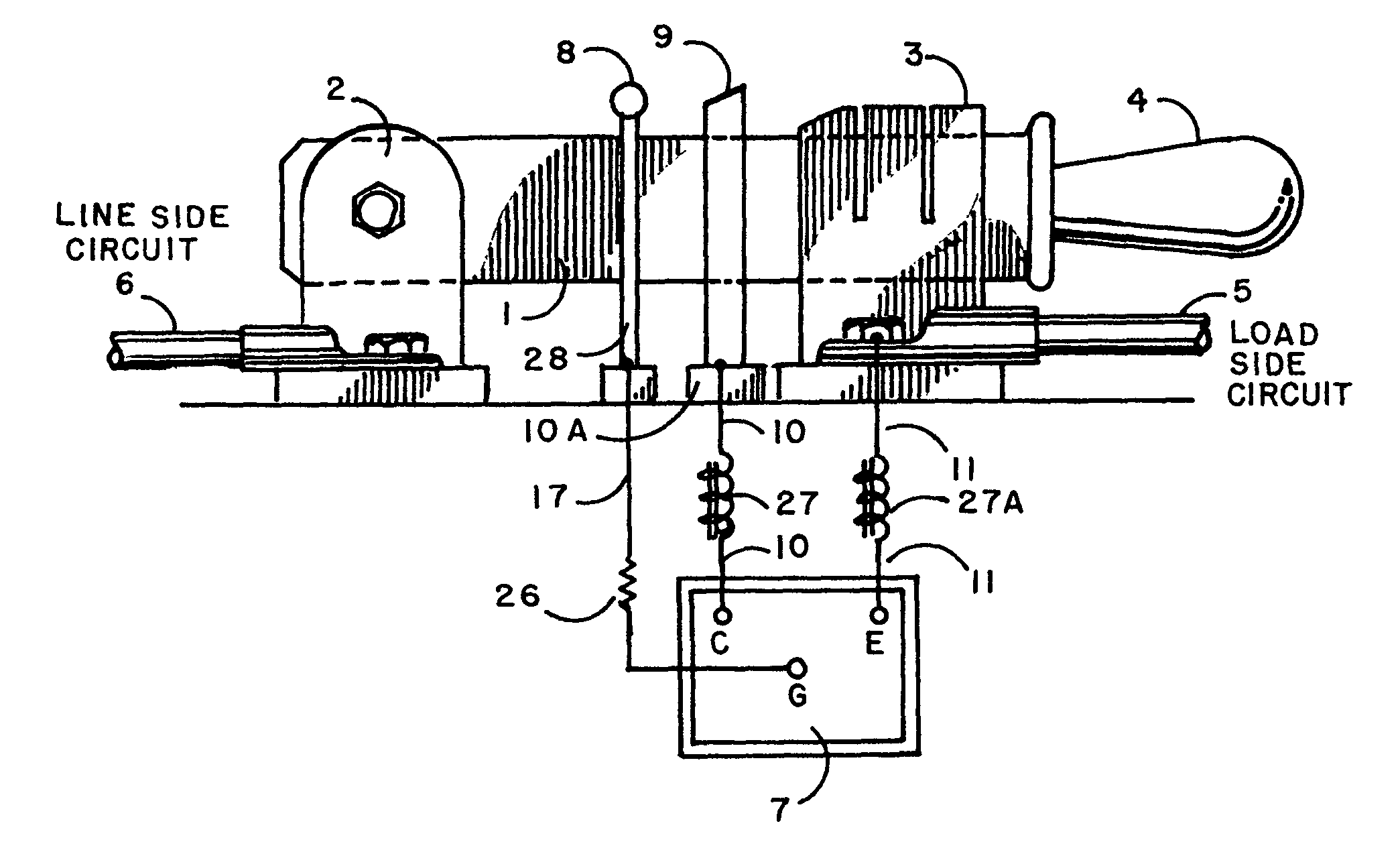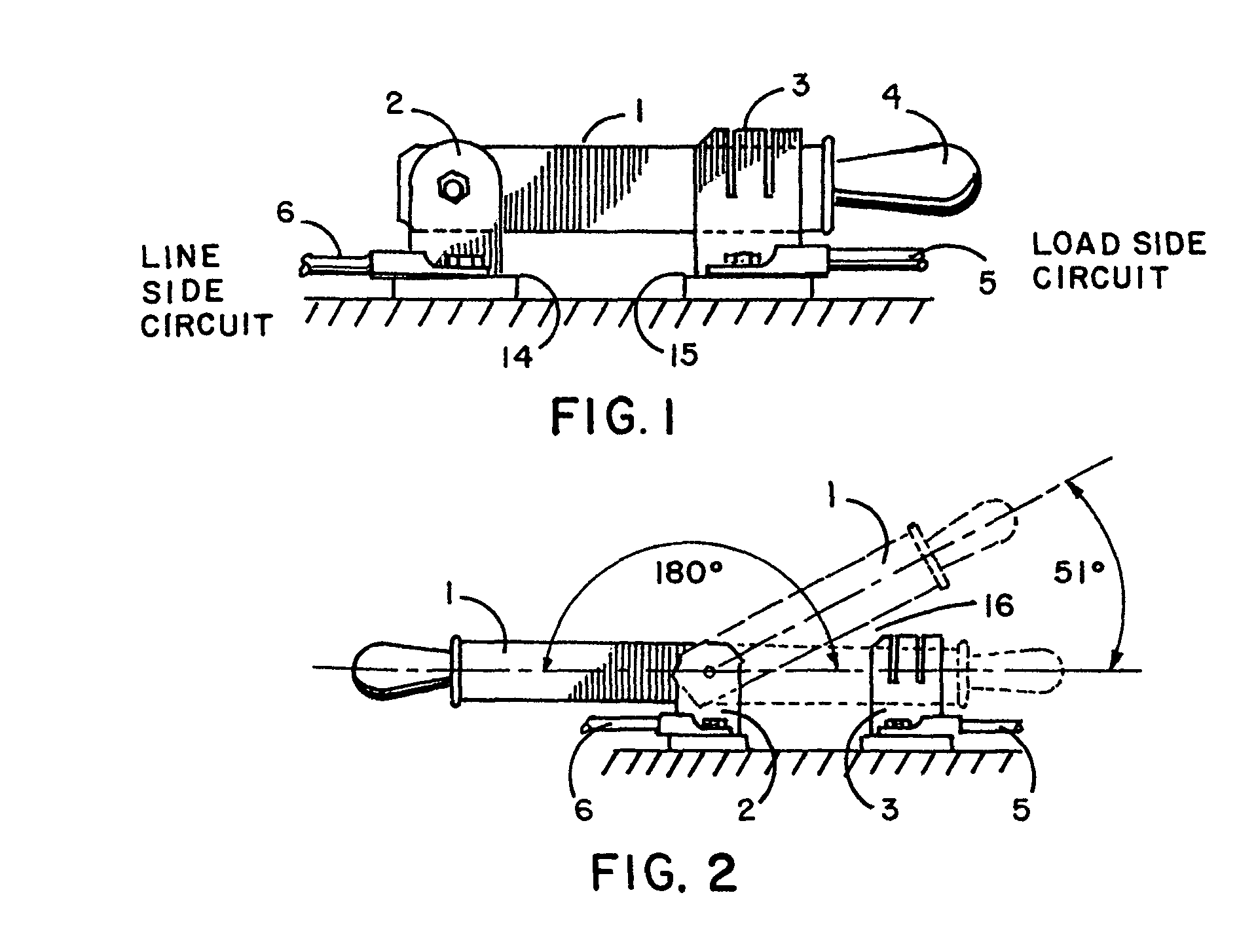Disconnect switch arc eliminator
a technology of disconnection switch and arc eliminator, which is applied in the direction of circuit-breaking switch details, switches with movable electrical contacts, electrical apparatus, etc., can solve the problems of arc so intense, switch destruction, and the entire power section must be killed
- Summary
- Abstract
- Description
- Claims
- Application Information
AI Technical Summary
Benefits of technology
Problems solved by technology
Method used
Image
Examples
Embodiment Construction
)
[0060]Referring to FIG. 1 there is shown the preferred embodiment of the invention applied to a disconnect switch as would be found in an electric railway, electric trolley bus system, mining operation or with motor control apparatus.
[0061]The following components of the equipment are shown in FIG. 3: primary blade 1 of the switch assembly, hinge 2 on hinge insulated mounting block 14 to which primary blade 1 is attached, primary jaw 3 into which primary blade 1 inserts, such primary jaw 3 mounted on jaw insulated mounting block 15, switch handle 4, primary jaw cable (load side circuit) 5, hinge cable (line side circuit) 6, insulated gate bipolar transistor (IGBT) 7, gate contact 8 held by gate contact support 28 attached to gate contact wire 17, secondary jaw 9, secondary jaw connection cable 10, secondary jaw insulated base 10A, choke coil 27, primary jaw connection cable 11, and choke coil 27A. The operation and function of the various components described in terms of the operat...
PUM
 Login to View More
Login to View More Abstract
Description
Claims
Application Information
 Login to View More
Login to View More - R&D
- Intellectual Property
- Life Sciences
- Materials
- Tech Scout
- Unparalleled Data Quality
- Higher Quality Content
- 60% Fewer Hallucinations
Browse by: Latest US Patents, China's latest patents, Technical Efficacy Thesaurus, Application Domain, Technology Topic, Popular Technical Reports.
© 2025 PatSnap. All rights reserved.Legal|Privacy policy|Modern Slavery Act Transparency Statement|Sitemap|About US| Contact US: help@patsnap.com



